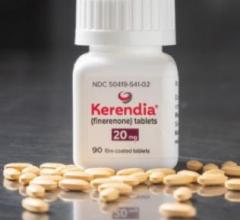
September 1, 2015 — Automated alerts for excess fluid accumulation in the lungs did not improve outcomes for heart failure patients with implantable cardioverter defibrillators (ICDs), according to results of the OPTILINK HF trial.
The findings, presented at the European Society of Cardiology (ESC) Congress 2015, “highlight the challenges and obstacles involved in ICD-based telemonitoring for heart failure (HF),” noted the study’s principal investigator Michael Böhm, M.D., from Saarland University Hospital in Homburg, Germany.
“Given the considerable, and largely unmitigated burden of HF, the potential for telemonitoring to improve the management of patients with HF is substantial,” said Böhm. “However, in our trial ICD-based telemonitoring did not increase appropriate interventions, despite intensive instruction of patients and physicians in the clinical trial setting,” he suggested.
Because hospital admissions are frequently preceded by increased pulmonary congestion in heart failure patients, the trial used special ICDs that allow for automatic transmission of alerts to a patient’s doctor when this happens. The alert is transmitted from the ICD through a telemedicine monitor that patients have connected to the internet at home.
A total of 1,002 patients received these ICDs, with 505 patients randomly assigned to have the automated transmission turned on, and 497 patients to have it turned off (standard care).
“If there was an alert, the physician called the patient, provided him with an exact care alert questionnaire, and increased therapies if necessary. Based on a strict algorithm patients were potentially seen or admitted to the hospital and care was initiated,” explained Böhm.
During the study period there were 1,748 “fluid threshold crossings” which triggered an alert. Three quarters (76 percent) of these alerts were successfully transmitted from the patient’s ICD to the physician, with the remaining 24 percent deemed unsuccessful because the patient was either already in the hospital, on vacation without the monitor or offline.
Medical action was taken by physicians for 30 percent of the successful transmissions – most of these involving medication changes. In the 70 percent of cases where no medical action was taken, the reason was that although the alert indicated a fluid threshold crossing, it was not considered clinically actionable because the patient did not indicate visible signs or symptoms of worsening HF, explained Böhm.
After 18 months of follow-up there was no significant difference between groups in primary endpoint, which was a composite of all-cause death and cardiovascular hospitalization.
The primary outcome occurred in 227 patients (45 percent) in the intervention arm compared with 239 patients (48.1 percent) in the control arm (hazard ratio, 0.87; 95 percent confidence interval [CI], 0.72 to 1.04; p=0.13). There were 59 (11.7 percent) deaths in the intervention arm and 63 (12.7%) in the control arm group (hazard ratio, 0.89; 95 percent CI, 0.62 to 1.28; p=0.52).
The obstacles to ICD-based HF telemonitoring identified in OPTILINK HF would likely be even more pronounced in a real-life clinical setting, noted Böhm. “Improved outcomes would require better patient adherence in terms of being online all the time,” he said.
For more information: www.escardio.org


 October 28, 2025
October 28, 2025 









